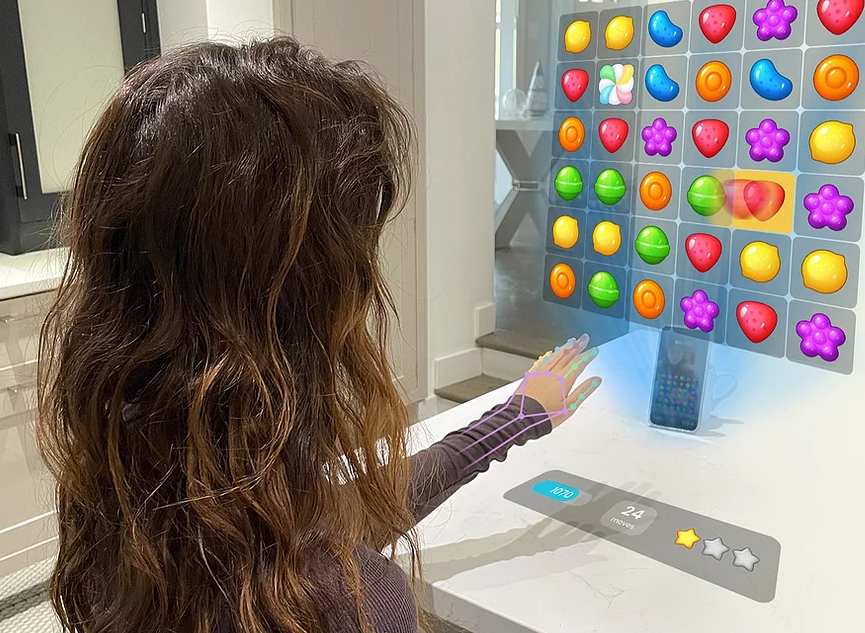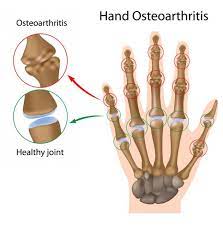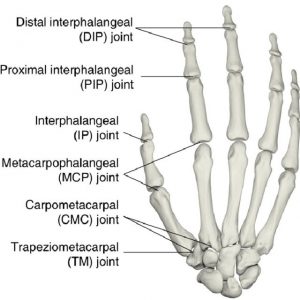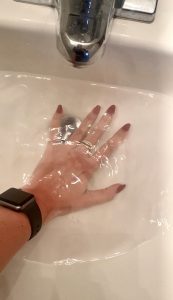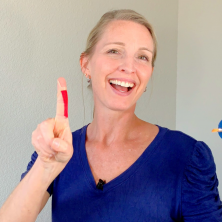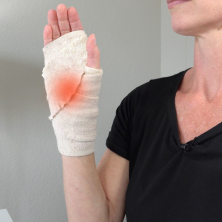Do you wake up with stiff hands in the morning? Does the stiffness stop you from doing your favorite activities? Do you have arthritis in your hands?
If you answered yes to any of these questions, then this blog post is for you!
In this blog, I’ll share my top 3 tips for using technology to help decrease hand stiffness.
You may be wondering why your hand is stiff to begin with and how can technology possibly help that? You may have an interest in technology or appetite to try something new to decrease hand stiffness.
So, let’s get into it.
Hand stiffness can be caused by many different factors!
It is common with hand arthritis, after an injury or surgery, and after wearing a cast or a brace. You may have noticed it after a wrist fracture and taking off a cast. Or you may struggle with hand stiffness daily as a symptom of your arthritis.
Nonetheless, this blog post is for you!
What is Hand Arthritis?
If we break down the word arthritis we have two Latin root words, “arthr-” and “-itis.” These words directly translate into joint and inflammation, or just joint inflammation.
This inflammation can affect the synovium, the lining between the joints, making it difficult to move the hands.
With osteoarthritis, the cartilage or the cushion between the bones begins to wear down over time and contributes to joint stiffness, particularly felt within the first few hours of waking.
You might notice that your hands feel like they just can’t get moving when you wake up.
First, let’s think about our hands. Did you know your hand has over 20 joints! These joints are all compact within a small space which makes the hands susceptible to hand arthritis.
Most commonly, hand osteoarthritis affects these three joints of the hand:
Carpometacarpal joint (CMC)– the joint where the thumb meets the wrist
Distal interphalangeal joint (DIP)– the joint at the end of the fingers, closest to the finger nail
Proximal Interphalangeal joint (PIP)– the middle joint in the fingers
Tip 1 for Using Technology to Decrease Hand Stiffness: Consult with an Occupational Therapist from the Comfort of Your Home
First and foremost, tip number one to decrease hand stiffness using technology is to use the technology to meet with an occupational therapist in your environment.
One of the greatest benefits is that you are able to use the context of your own environment.
This gives the occupational therapist insight into the specific tasks that may be contributing to the hand stiffness.
There may be tasks that you do more frequently that are contributing to your stiffness. For example, could be the way you are cutting your food or holding your coffee mug.
During the telehealth call from your mobile device, the therapist can teach you specifically about your hand stiffness and what tasks may be contributing to the stiffness.
In real-time, the therapist is able to instruct you on joint protection techniques to help reduce the stress on the joints. In turn, reducing your hand stiffness and pain.
For example, you may be meeting with your therapist in the morning drinking your coffee and notice that lifting the mug is causing you to have increased hand pain and stiffness.
In this case, your therapist may suggest tips like this one to help reduce the stress on your thumb joint and protect the joint from future damage.
You may even benefit from using your coffee mug as a heat modalities (see tip #3!).
This telehealth call can be done from your mobile device, using the Reactiv app. Compared to an in-person session, Reactiv eliminates the need to use the clinic’s equipment to practice the tasks and you are using your own equipment, in your own home.
Tip 2 for Using Technology to Decrease Hand Stiffness: Engage in Multidirectional Hand Movement
Multidirectional hand movement is just like it sounds… moving the hand in all directions!
A lot of times, people with hand stiffness are under the impression that they can’t move their hands since they have joint pain.
However, this is not the case!
Our hands are meant to move and if we keep them still, it can cause additional stiffness and pain. Movement helps keep the joints lubricated, helps with blood flow, and reduces inflammation and pain.
One of the coolest things about virtual care and Reactiv app, is that there are games built into the app that engage the hand in this multidirectional movement!
These games are fun and much different than other exercises to reduce hand stiffness you may have tried.
This way, you’re not sitting there and thinking about doing your exercises and rather playing the games.
These games use computer vision technology to track your hand movements and match them to the gameplay.
The Bubble Shooter game in particular uses the hand movements to open and close your hand as well as forearm rotation to shoot the bubbles at the target.
As a result, this movement helps the fingers engage in different planes of motion, lubricate the joints, and can help reduce stiffness in the hand.
When you are playing the games, you often don’t even feel that you are exercising!
Your mind is directed to the actual task of the game and trying to beat the level rather than exercise.
Tip 3 for Using Technology to Decrease Hand Stiffness: Learn What Modalities Work Best for You
Most people with osteoarthritis and hand stiffness benefit from using heat modalities. Heat can help increase blood circulation, reduce inflammation, and decrease stiffness.
My favorite hand stiffness modality is using a warm water bath. You can do this by filling the sink, a bowl, or even the tub with warm water.
Next, fill it with enough water to cover your hand. While your hand is in the water, you can move it into different positions.
Try these movements, open and close your hand, making a circle between the thumb and index finger, and spreading your fingers out.
This pair between the heat of the water and the exercises helps make the exercises easier and can help reduce the stiffness!
For some people, stiffness is most bothersome first thing in the morning and heat is a great way to assist with getting the hand moving.
For others, it may be after they’ve been working for a few hours and it is more beneficial to use the modality later in the day to help break up the day and tasks.
Conclusion:
Combining these three tips together can create a tailored program to help treat your individualized hand stiffness problems.
Remember, everyone’s hand stiffness is different and you may benefit from meeting with an occupational therapist virtually to address your specific concerns.
Like I said, my top three tips to reduce hand stiffness are to meet virtually with an occupational therapist, engage in multidirectional movement, and learn what modalities work best for you!
If this sounds like something you need to try to decrease your hand stiffness, you can sign up for Reactiv through our website or can download the app from the Google Play Store or the App Store to get started.
As a disclaimer, make sure you consult with your doctor if you have had a recent injury to ensure that you are cleared to try the exercises mentioned.
I hope you found this blog post helpful. If you did, share with someone you know so they can use technology to decrease their hand stiffness.
About the Guest Author

She has been a licensed occupational therapist since 2017 and has years of experience working at an outpatient clinic treating upper extremity conditions.
She also has an interest in health technology and its use in improving patient experience.
What is Reactiv?
Reactiv is a virtual clinic for people with chronic pain, centered around engaging interactive experiences. First, you’ll start by connecting with a licensed Occupational Therapist who will design the right plan of care for you and help you navigate the challenges of life with chronic pain.
A key part of the care is to play AR-based games to reduce pain and stiffness in your joints. Reactiv uses your smartphone’s camera to track your movements, detect the appropriate motions, and then match these motions to a gaming experience (think Candy Crush and Tetris-like games).
No hardware needed. All can be done with the Reactiv app.

